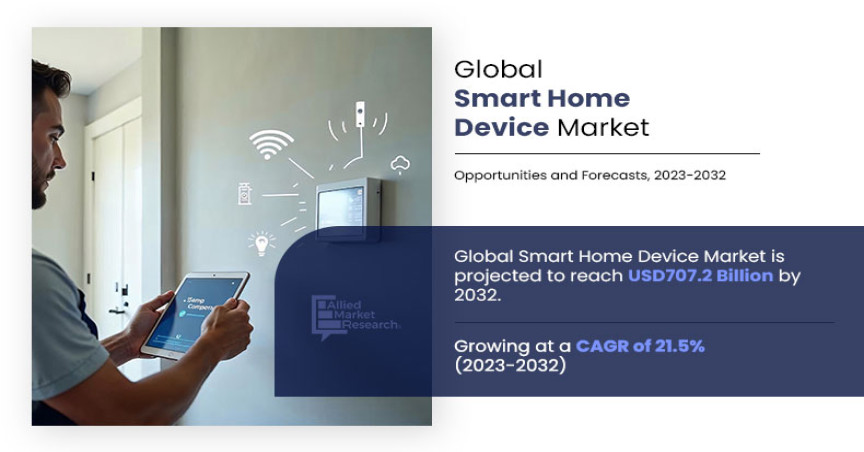Key Takeaways
- The global smart home devices market is projected to grow from $101.6 billion in 2022 to $707.2 billion by 2032, with a CAGR of 21.5%.
- The major growth drivers include increased demand for convenience, energy conservation, and advancements in communication technology.
- North America leads the market, while the Asia-Pacific region is expected to exhibit the fastest growth at a CAGR of 26.1% during the forecast period.
Market Overview
Allied Market Research recently released a report forecasting the smart home device market to reach an impressive $707.2 billion by 2032. This reflects a compound annual growth rate (CAGR) of 21.5% from its current valuation of $101.6 billion in 2022. The report details critical market dynamics, competitive analysis, and growth strategies essential for stakeholders keen on understanding the industry landscape.
Key factors fueling this market surge include heightened convenience demands and increased awareness of energy conservation. Furthermore, advancements in communication technologies significantly enhance market prospects. However, high initial costs for smart home devices represent a challenge to widespread adoption.
By segment, the solutions category dominated in 2022, capturing nearly two-thirds of the market share due to the integration of artificial intelligence (AI) and machine learning (ML) in smart home solutions. The service segment is anticipated to grow at the fastest rate of 22.8% during the forecast period, driven by a growing need for comprehensive service packages.
Lighting control emerged as the leading type of smart home device, holding about one-third of the market share. This segment allows users to customize lighting settings for various activities. In contrast, the smart kitchen sector is projected to grow at an impressive 23.5% CAGR, as it offers intuitive voice-controlled functionalities across kitchen appliances.
Regionally, North America accounted for the largest market share in 2022, largely due to the rising adoption of smart security systems. Meanwhile, the Asia-Pacific region is expected to see the fastest growth, anticipated at a CAGR of 26.1%, fueled by an evolving urban lifestyle that prioritizes convenience and efficiency in home management.
The content above is a summary. For more details, see the source article.















